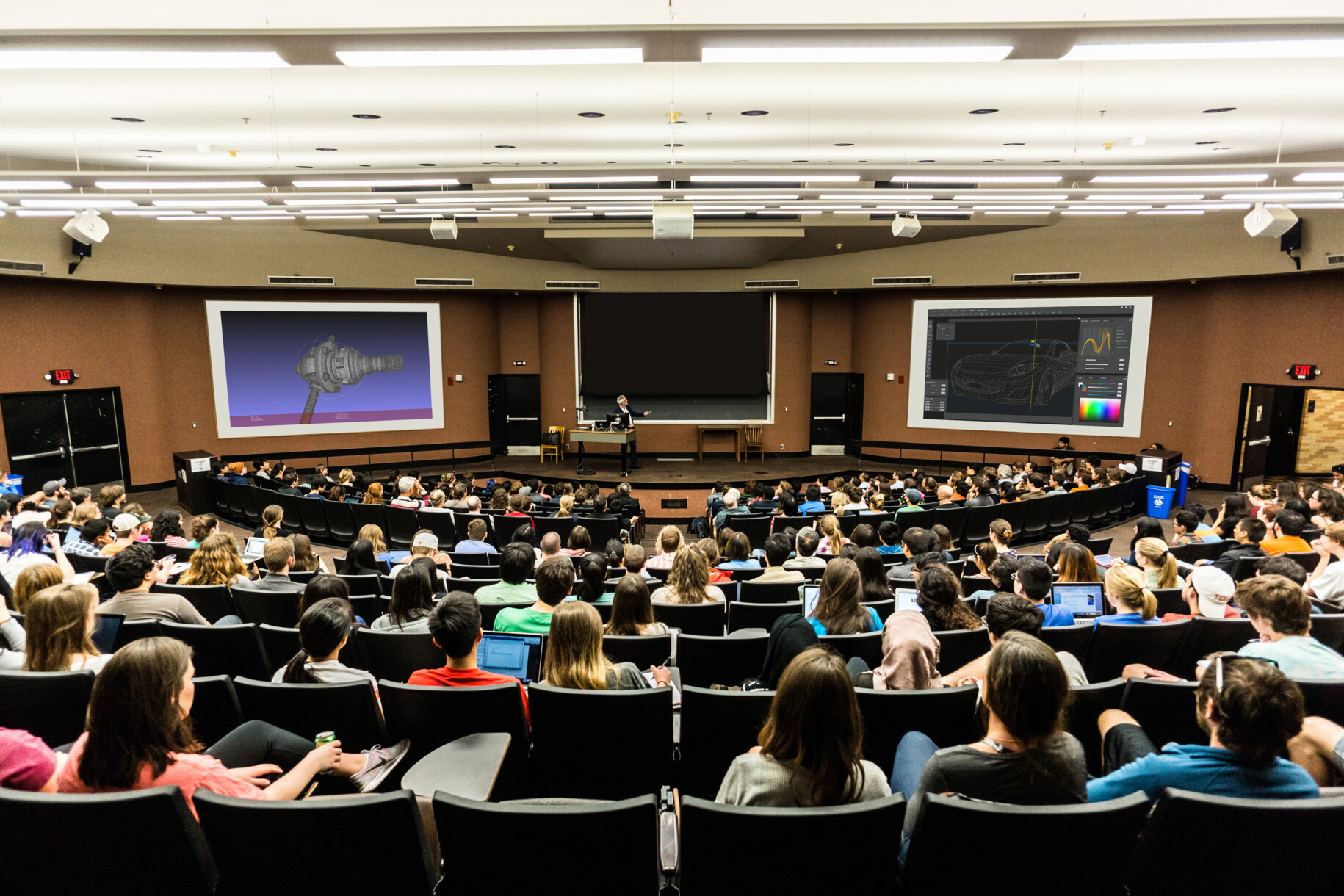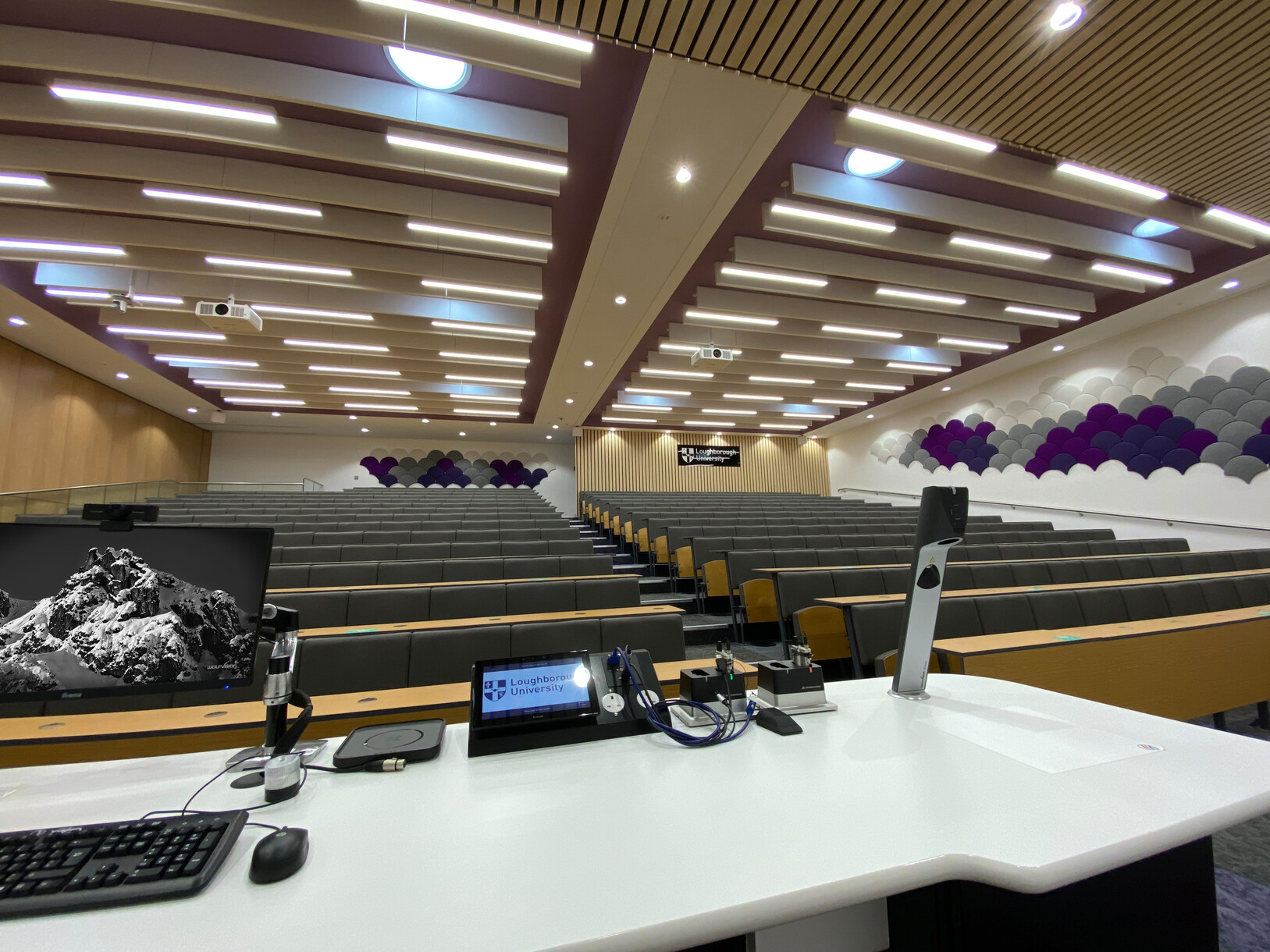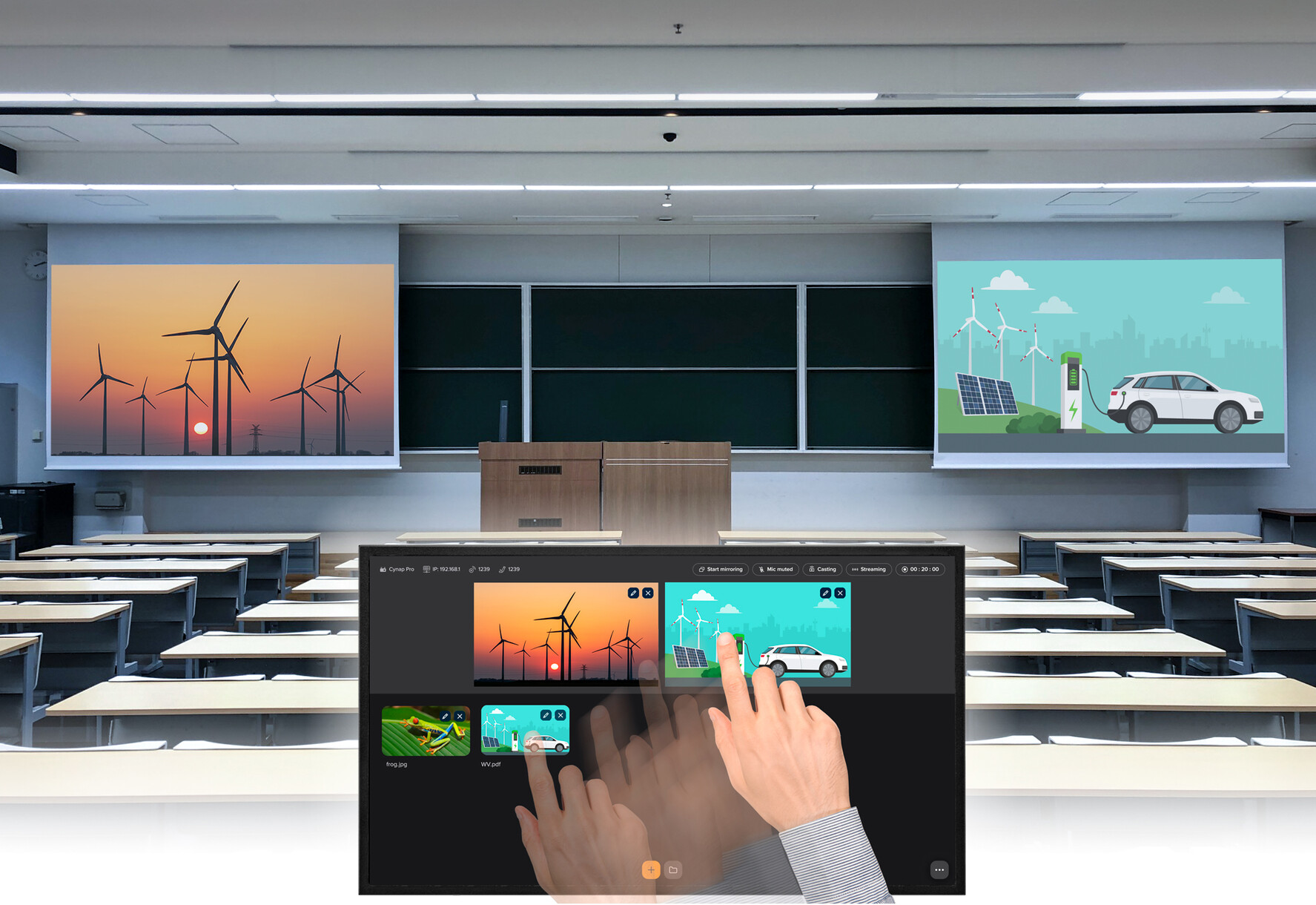Exploring AV higher education technology in lecture theatres
Six ways AV technology can enrich the educational experience.
Enhancing the teaching and learning experience
AV equipment is an integral part of modern higher education technology. It plays a significant role in enhancing the teaching and learning experience in lecture halls.
In larger teaching spaces it is challenging to bring an inclusive element into lectures. It is simply not possible to teach all classes in specially designed multi-workstation active learning classes such as those equipped with WolfVision's vSolution MATRIX collaboration solution.
Here are six ways AV technology can enrich the educational experience.
1. Uplifting Presentations
High-grade audio-visual equipment, such as large display screens or projectors, makes presenting complex information more effective. This helps students comprehend and retain the session's content better. High-definition displays are especially beneficial when used to exhibit visual data like graphs or diagrams.
In large lecture halls, considering the experience of students sitting in the back is crucial. Large display screens are beneficial here. Moreover, streaming onscreen content to students' personal devices for live viewing or recording is extremely helpful.
Merely using Microsoft PowerPoint slides isn't enough for memorable presentations. The longer the session, the harder it gets for students to maintain their concentration. To keep their attention, it's essential to incorporate multi-media content into presentations.
This could include physical objects displayed using a document camera or Visualizer. Additionally, digital materials such as graphs, diagrams, images, and videos can be displayed. Other web-based materials can also be used.
Supplementing spoken content is crucial. It aids students in understanding complex concepts more readily and makes the lecture more engaging.
There are numerous wireless presentation systems available, such as those manufactured by WolfVision. These systems are user-friendly and are designed to handle the presentation of multi-source content materials.
2. Boosting Engagement
In sizable learning spaces, individual interaction can be challenging. Here are a few strategies to ramp up engagement.
Split students into smaller groups, each using a touchscreen device. Sharing the output from collaborative activities wirelessly encourages participation.
Students could use their personal devices, like smartphones or tablets, to connect to an audience response system. They can then answer interactive questions or quizzes. Displaying the responses collectively on large screens can boost participation and foster a competitive spirit among students.
Personal devices can also be used in Q&A sessions. Students can submit their questions or comments through a dedicated platform, making it easier for educators to interact with their students.
These strategies aim to promote engagement and interaction among students, making presentations more memorable and fostering a deeper understanding of the topic.

3. Delivering Clear Audio for Enhanced Understanding
Clear audio is vital in lecture halls to ensure maximum comprehension. High-quality sound systems play a crucial role in delivering clear and intelligible sound, regardless of where a student is seated. Audio systems designed to minimize echo, background noise, and audio feedback create a more focused learning environment.
This is particularly important for students seated at the back of the lecture hall or those with hearing impairments who rely on assistive listening devices. Clear audio improves the learning experience, encourages active participation, and aids comprehension.
4. Promoting Accessibility and Inclusivity
AV equipment in higher education institutions does more than just enhancing content delivery. It significantly contributes to increasing accessibility and promoting inclusivity.
For students with hearing impairments, hearing loops can be integrated into audio systems. This transmits sound directly to hearing aids or cochlear implants, enabling clear audio reception.
Assistance for visual impairments can also be made using AV equipment. High-contrast displays, adjustable font sizes, and color adjustment options make it easier for these students to read the presented material.
By implementing accessibility features, AV equipment helps to provide an inclusive learning environment where every student has equal opportunities to engage with the content.

5. Supporting Remote Learning
Technologies like video conferencing and live streaming help universities reach students who are unable to attend in-person lectures. Remote learning, at its best, uses AV equipment to create engaging and interactive online learning experiences.
Web conferencing services allow students to participate in virtual classes and engage in real-time discussions with educators. Pre-recorded lessons offer the flexibility to review course materials on demand. AV equipment supports multi-media visual presentations, interactive whiteboarding, and screen sharing.
While remote learning provides opportunities for self-paced learning and accessibility, it also poses challenges. These include potential technical issues and the need for self-discipline and time management skills.
6. Reinforcing and Reviewing Content
Lecture capture systems have revolutionized the learning experience by enabling lecture recording for on-demand viewing. AV equipment plays a vital role in capturing the instructor's presentation, visuals, and audio with clarity.
Recordings offer students the flexibility to revisit complex topics, check their understanding, and catch up on missed lectures. Lecture capture systems use AV equipment to provide students with anytime access to educational content, promoting continuous learning and better learning outcomes.
By using AV equipment in lecture halls, educators can create a more engaging, accessible, and dynamic learning environment.
The easy way to organise display materials for your presentation
vSolution COMPOSER, WolfVision's dual-screen content manager available on its top-tier Cynap Pro model, is highly beneficial in larger lecture halls and auditoriums where twin display screens are in use.
Presenters can prepare and view content on a connected preview screen before dragging and dropping it onto either the left or right-hand main display screen as needed during presentations.
This feature adds outstanding additional functionality to Cynap Pro further enhancing its capabilities when used as the 'all-in-one' presentation and collaboration system in environments using two display screens.

About WolfVision
WolfVision is a manufacturer of award-winning presentation, web conferencing, collaboration, and Visualizer solutions. WolfVision Cynap and Visualizer systems are used worldwide, by leading universities, colleges and other educational institutions. They are also used in conference rooms during presentations, web conferences, and training sessions. In courtrooms they are used for presentation, management, and distribution of judicial evidence.
WolfVision offers a range of wireless presentation, web conferencing, and collaboration systems, suitable for classrooms of any size. With identical UI across the range, it's easy to standardize across campus.
Contact us now to discover how your learning spaces can benefit from WolfVision solutions!
